SpaceX Set to Launch First V2 Mini Starlink Broadband Satellites
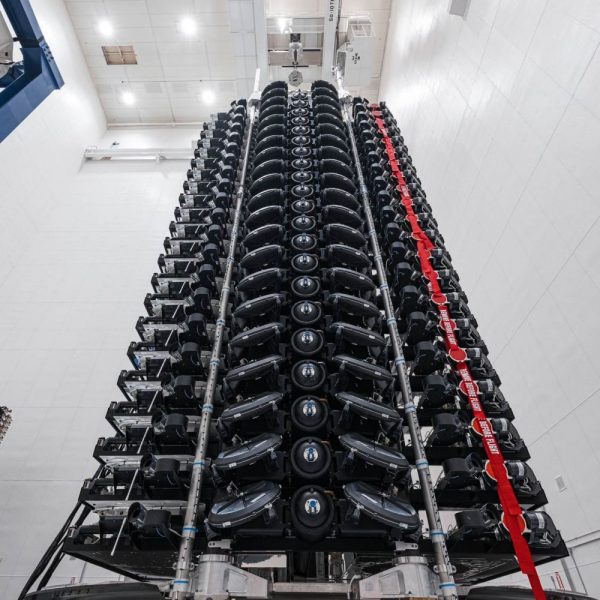
Elon Musk’s SpaceX will today attempt to launch the first batch of its second generation “V2 Mini” (Bus F9-2) ultrafast broadband satellites into Low Earth Orbit (LEO), which add a bunch of new features that should help to improve the service for both consumers and businesses alike.
Customers in the UK typically pay from £75 per month, plus £460 for the regular home kit (standard dish, router etc.) and £40 for shipping on the “Standard” package, which promises unlimited usage, fast latency times of 25-50ms, advertised downloads of c. 50-200Mbps and uploads of c.5-15Mbps (speeds may change as the network grows).
As we’ve previously reported (here), Starlink has decided to change its approach to their future second generation (GEN2) satellites. The original plan was just to launch them in a single form factor aboard their new Starship rocket, but that still isn’t ready. Instead, the company decided to develop an intermediate GEN2 platform called V2 Mini (Bus F9-2), which includes some, but not all, of the GEN2 features.
Advertisement
The V2 Minis are bigger and heavier than their earlier satellites at 830kg (4.1 metres by 2.7 metres) – more than double the 300kg of their GEN1s, albeit smaller than their full GEN2 (Starship) platform on 2,000kg. But for that, the V2 Minis will include more solar panels, more powerful phased array antennas and the use of E-band for backhaul – this will allow Starlink to provide around 4x more capacity per satellite than earlier iterations.
Starlink Statement on V2 Mini Launch
Since the original license to operate the Starlink Generation 1 network was granted in March 2018, SpaceX has rapidly deployed satellites to bring internet to the hardest to reach places in the United States and abroad. Five years later, SpaceX has launched nearly 4,000 satellites and is providing highspeed internet to more than one million locations around the world, the majority of which are households. Starlink continues to grow rapidly, and SpaceX has raced to keep up with a surging demand for connectivity across the United States and across the globe, especially in areas where few, if any, options for broadband connections have existed before now.
With the recent authorization of our second-generation network, or “Gen 2,” SpaceX will provide even faster speeds to more users. This new authorization enables SpaceX to launch additional, much-improved spacecraft with significantly more throughput per satellite than the first-generation systems. For the end consumer, this means more bandwidth and increased reliability. As a result, millions of more Americans will have access to high-speed internet no matter where they live.
On top of that, the V2 Minis also add new Argon Hall Thrusters for on orbit manoeuvring, which have 2.4x the thrust and 1.5x the specific impulse of their first gen thrusters. “This will also be the first time ever that argon Hall thrusters are operated in space,” said SpaceX (here).
Tech Specs of the Argon Hall Thruster
– 170 mN thrust
– 2500 s specific impulse
– 50% total efficiency
– 4.2 kW power
– 2.1 kg mass
– Center mounted cathode
However, the catch with having a bigger and more powerful satellite form factor is that SpaceX’s Falcon9 rocket can’t launch as many of them at the same time. As a result, today’s launch will only loft 21 into orbit, which compares with the 50-55 GEN1s they’ve been able to launch on a fully dedicated Falcon9. Naturally, this weighs a bit against the added capacity that the V2 Minis bring.
SpaceX is currently targeting Monday, February 27 at 1:38 p.m. ET (18:38 UTC) for a Falcon 9 launch of the 21 mini second-generation Starlink satellites to low-Earth orbit from Space Launch Complex 40 (SLC-40) at Cape Canaveral Space Force Station in Florida – WATCH HERE. If needed, a backup opportunity is available on Tuesday, February 28 at 1:49 p.m. ET (18:49 UTC).
Advertisement
Mark is a professional technology writer, IT consultant and computer engineer from Dorset (England), he also founded ISPreview in 1999 and enjoys analysing the latest telecoms and broadband developments. Find me on X (Twitter), Mastodon, Facebook, BlueSky, Threads.net and Linkedin.
« The Case of a 6 Year Wait for an Unfinished Openreach FTTP Build
Netomnia FTTP Broadband Rollout Targets Apartment Blocks »









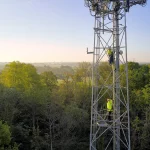

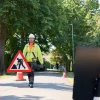

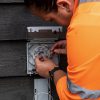
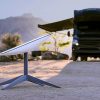







































The actual solution to remote locations, not steal more money from taxpayer
Pay some American to do it?
I’m not English and I’m getting paid to do it
The difference is that I’m not taking money that has been involuntarily stolen from the population
Nah, this will never compare to true fibre internet in terms of cost and performance. This should be a solution for truly remote areas like Greenland, northern Canada, interior of Australia, airplanes, ships, etc. No one in the UK should have to use satellite internet, with the possible exception of some remote islands.
Chris no one pays Elon to do it – and what he charges is very reasonable – wind it in fella. Starlink costs $50,000 a month to maintain – that’s very very good!
Tom, A Mini would never compare to a Ferrari – If you can get a Ferrari you don’t want a Mini and if you can get FTTP you don’t want or need Starlink – so your useless point is?
Only certain types of people would favour an uber expensive impractical Ferrari over a (relatively) cheap practical Mini.
I live in mainland Scotland but my options for 20 years have been: .3 Mbps landline broadband, landline telephone on a noisy, unmaintained cable or geostationary satellite broadband with high latency, maximum 70 Mbps download/3 upload, expensive and capped at 100 gigs of download/upload. Starlink gives me, at the same cost as Eutelsat: 150-250 Mbps download/ 20 upload, latency allowing me to ditch my landline for VoIP, no usage limits so enabling us to stream TV and music like smug metropolitans. Starlink are our life changing heroes and I anticipate it getting better and better without causing road blocks laying cables
Nick, those shouldn’t be your options. The government should make sure that that telephone line you have that can barely yield 0.3mbps via DSL is replaced with a fibre line that can give you the speeds you need and more. Starlink is great, but you shouldn’t have to use it in the UK, it should be for super remote areas, which Scotland is not. But for the time being it’s great that you have the option of course.
@Tom with the best will in the world it is going to take time to build out a fibre optic connection to everyone. In the meantime, if you live somewhere with really poor existing options for internet then Starlink is a viable option that provides a decent internet connection today. Longer term Starlink will be able to provide internet in places that are unrealistic or impossible to connect with fibre and there is good money to be made in that too.
Yup set to stream live at 10:15 tonight on YT
Starlink keeps on providing.
Giggerdy giggerdy goo!!!!
Our saviour the alien in the mask.
Is putting thousands of Leo’s in orbit necessary? I admit it’s a spectacular goal to provide thousands of satellites spanning the globe, but why not put less satellites at a slightly higher orbit and use HAPS in combination with the LEO’s? HAPS can stay up for weeks and offer good 5G coverage, couldn’t they design a system that uses a combination of HAPS, LEO’s and Ground Stations to get the best of all worlds, with less hardware in space?
From what I’ve read Starlink is currently loss making, so the economics of a stand alone LEO service may not work in the long run, maybe it’d make sense to take another look at the operating model.
Has any infrastructure ever managed to achieve profit during its deployment phase?
I hardly think the fact that Starlink is currently loss-making – at a time when it’s paying (potentially billions) to put thousands of expensive telecommunications satellites in LEO – means that the economics won’t work in the long run.
I mean, it’s a bit like saying Virgin Media’s cable network has no economic case, because Telewest was making a loss on it in the late 90’s/early 00’s.
As with most infrastructure projects, most of the profit will be generated over the life of the infrastructure assets.
Obviously, I am aware that the current satellites have far more limited lifespans than, for example, fibre, at about 5 years. However I’d suspect this doesn’t compare unfavourably with most wireless infrastructure, which tends to get upgraded every 3-4 years anyway.
In terms of using higher orbiting satellites, this inevitably introduces additional latency, whenever a connection has to go beyond a local HAP.
It’s also far more expensive to launch payloads into higher orbits (a GEO payload costs at least 6x the amount of an LEO one) – one of the reasons why they went with a LEO approach in the first place.